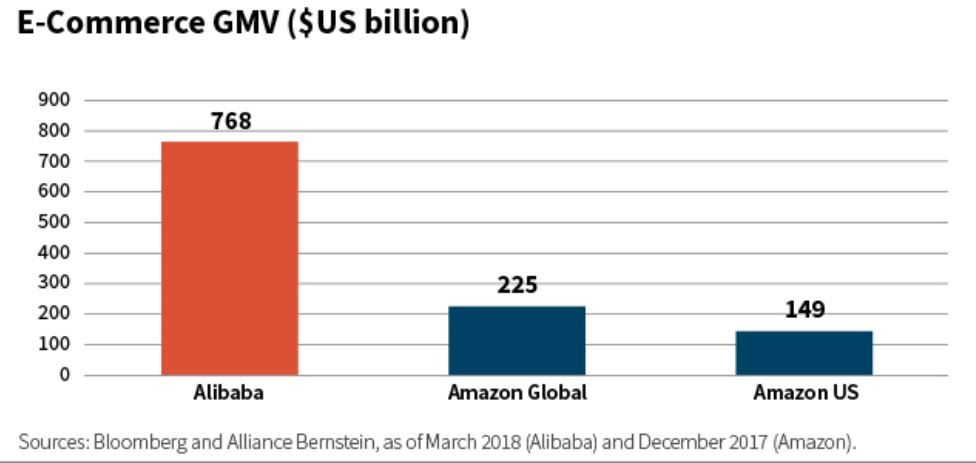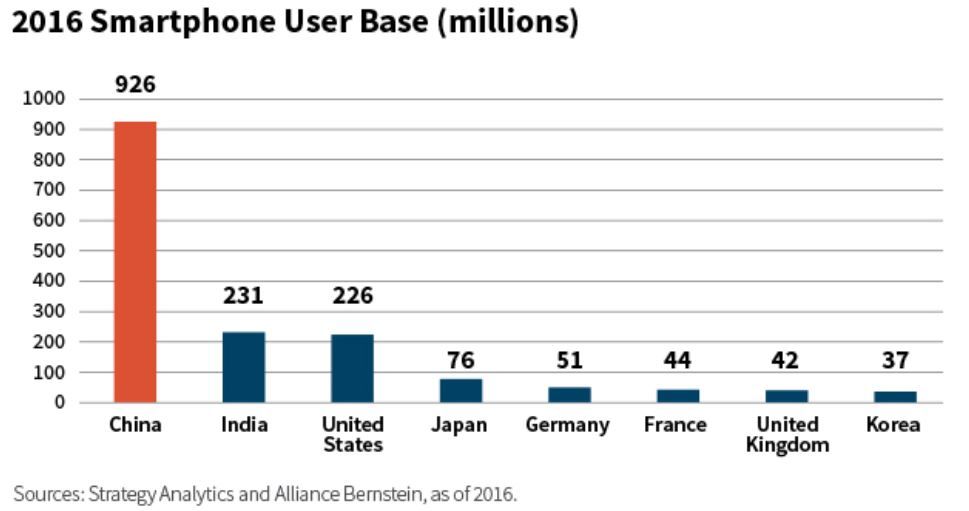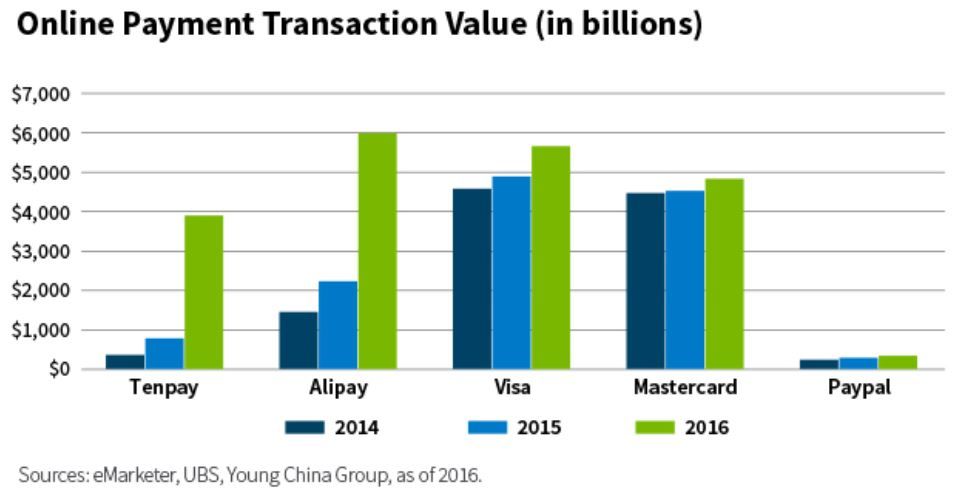
The conventional perception of China's economy is that it's driven by manufacturing and other old-world industries. But this view doesn't capture the remarkable advancements in innovation coming out of the country.
While this spirit of innovation has manifested itself across numerous industries, e-commerce may be China's most impressive growth story.
Global Leadership in E-Commerce
China is now home to the largest e-commerce market in the world, with total sales in the category nearing $1 trillion as of 2016. That's more than 50% larger than the United States.
Alibaba, China's largest e-commerce company, generated $760 billion in gross merchandise value in fiscal 2018. This is five times more than Amazon's U.S. sales and 3.5 times more than its global sales. In this year's “Singles Day” alone, Alibaba sold $30.8 billion of goods across its platforms in 24 hours.
The tremendous e-commerce growth in China is driven by strong smartphone adoption and a focus on innovation and technological advancement as part of the country's “Made in China 2025” plan. The initiative spans industries such as e-commerce, semiconductors, artificial intelligence, healthcare, and green industries.
Though this initiative is relatively new, it's worthy of investors' attention because it will play an important role in spurring further innovation—and combatting the conventional perception that China is a low-value-add manufacturing center.
The growth of e-commerce in China is being driven by the high degree of smartphone adoption and the sheer size of China's smartphone user base. With nearly 926 million users, China's smartphone user base is about four times larger than India's or the United States'.
Smartphone Adoption Spurs E-Commerce Growth
The growth of e-commerce in China is being driven by the high degree of smartphone adoption and the sheer size of China's smartphone user base. With nearly 926 million users, China's smartphone user base is about four times larger than India's or the United States'.
In China today, you can live without a wallet, but you can't live without a smartphone. Almost everyone in China uses QR codes—at McDonald's, to pay for taxis, even at the outdoor wet market to buy potatoes or bok choy. These markets may be a very traditional form of trade, but the way they transact is advanced.
Part of the reason China's mobile economy outpaces the United States' is because, as an emerging economy, China doesn't have to navigate numerous legacy issues. There wasn't much competition from landlines, so new users moved right into mobile phones.
Giant Mobile Payment, Social Networking Platforms
Not surprisingly, China's robust e-commerce activity has created a huge market for online payments. This market is dominated by a few players: Alipay, owned by Alibaba, and Tenpay or WayPay, owned by Tencent.
The combined transaction value on Tenpay and Alipay in 2016 was about $10 trillion, roughly the same amount that Visa and MasterCard processed globally that year.
China's social networking platforms have similarly impressive scale. WeChat, China's dominant messaging app developed by Tencent, currently has about 1 billion monthly active users. WeChat is a combination of Apple Pay, Amazon, Facebook, Twitter, online ticket payment, and utility payment. Users can fulfill almost all of their daily needs without leaving the platform.
China's e-commerce and social media markets are unique not only in their size, but also for how integrated the platforms are. This, along with their scale and lack of encumbrances from legacy platforms, make these markets among the most interesting aspects of China's larger innovation story.
Vivian Lin Thurston, CFA
portfolio manager and research analyst Global Equity team
William Blair Investment Management
Tipp: Dieser Beitrag ist auch im "Investment Insights"-Blog von William Blair verfügbar.
William Blair Updates per E-Mail erhalten







